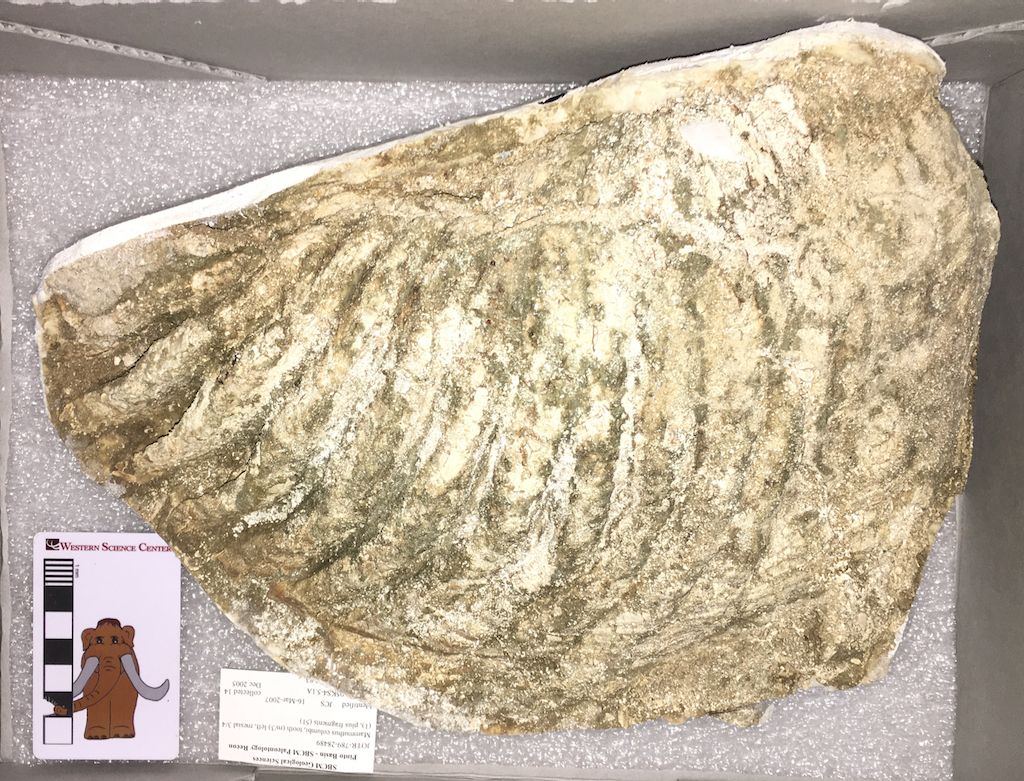 Today's Fossil Friday specimen comes from a location we've never before featured on this blog, Joshua Tree National Park.Joshua Tree is most famous for its eponymous trees and its spectacular granite formations, but there are also significant Pleistocene fossil deposits within the park. Over a period of several years Kathleen Springer and Eric Scott (then at the San Bernardino County Museum) collected some of these remains under a NPS permit. Earlier this week Joshua Tree designated Western Science Center as the repository for that collection and transferred the specimens here.The Joshua Tree fauna is an contrast with other Southern California sites such as Diamond Valley Lake in that, like today, during the Pleistocene it was more mountainous and more arid than the inland valleys. While the fossils from Joshua Tree are almost all fragmentary and poorly preserved, studying the fauna from this site will help give us a more complete understanding of how California ecosystems worked during the Pleistocene.The particular fossil shown here is a Columbian mammoth lower left third molar, one of several mammoth remains in the collection. Mammoths seem to be one taxon that had a great deal of ecological flexibility, as they are found in almost every imaginable Pleistocene deposit.Thanks to Melanie Spoo of Joshua Tree National Park and Vincent Santucci of the National Park Service for arranging the move of the Joshua Tree fossils to WSC.
Today's Fossil Friday specimen comes from a location we've never before featured on this blog, Joshua Tree National Park.Joshua Tree is most famous for its eponymous trees and its spectacular granite formations, but there are also significant Pleistocene fossil deposits within the park. Over a period of several years Kathleen Springer and Eric Scott (then at the San Bernardino County Museum) collected some of these remains under a NPS permit. Earlier this week Joshua Tree designated Western Science Center as the repository for that collection and transferred the specimens here.The Joshua Tree fauna is an contrast with other Southern California sites such as Diamond Valley Lake in that, like today, during the Pleistocene it was more mountainous and more arid than the inland valleys. While the fossils from Joshua Tree are almost all fragmentary and poorly preserved, studying the fauna from this site will help give us a more complete understanding of how California ecosystems worked during the Pleistocene.The particular fossil shown here is a Columbian mammoth lower left third molar, one of several mammoth remains in the collection. Mammoths seem to be one taxon that had a great deal of ecological flexibility, as they are found in almost every imaginable Pleistocene deposit.Thanks to Melanie Spoo of Joshua Tree National Park and Vincent Santucci of the National Park Service for arranging the move of the Joshua Tree fossils to WSC.
